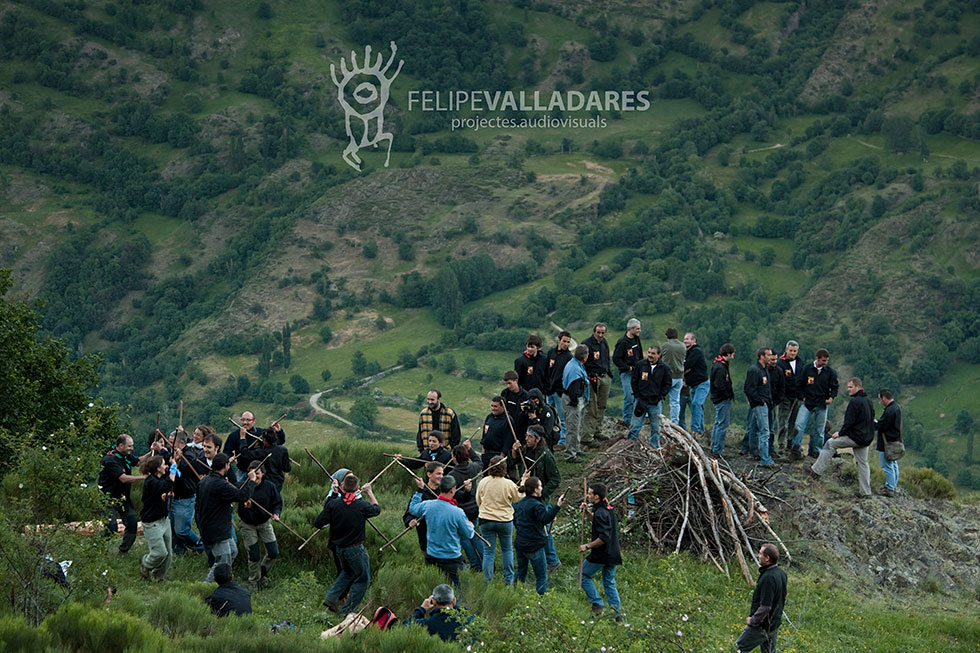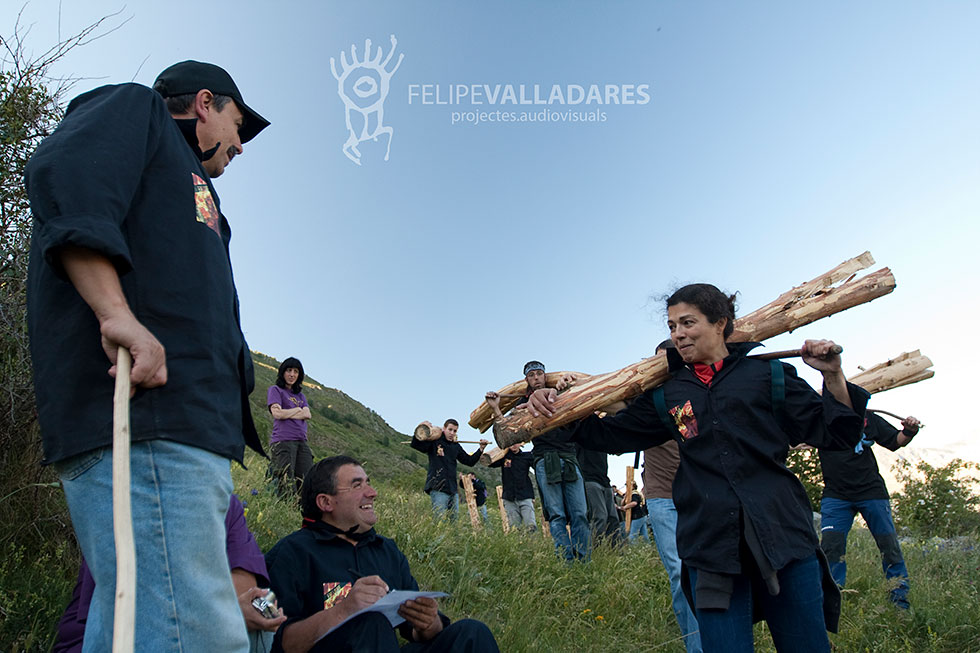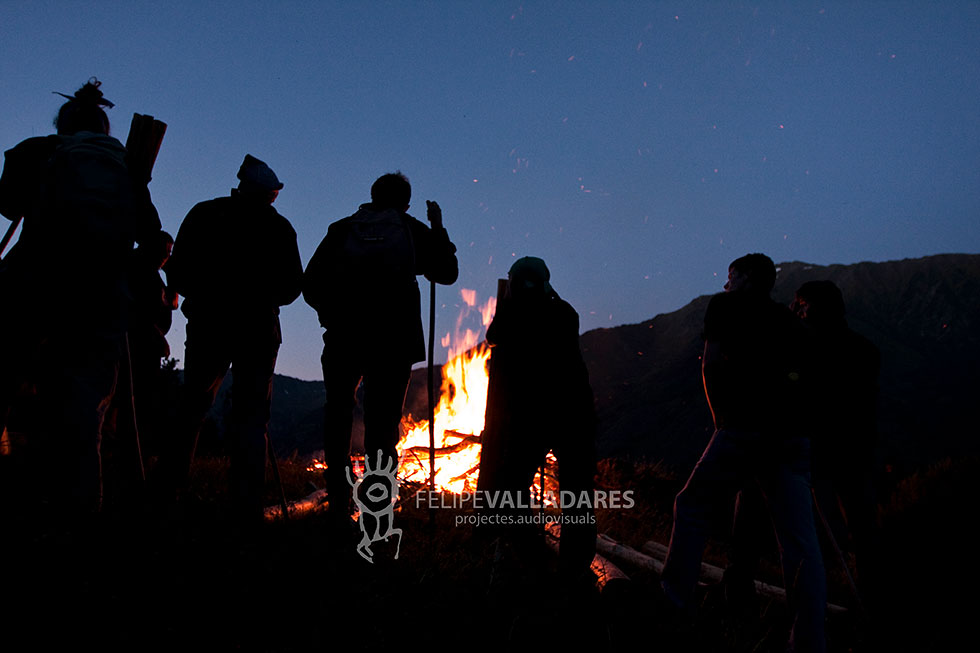The Isil falles are amongst the most well-known in the Pyrenees. Although of unknown origin, they were mentioned in a 1902 article in La Veu de Catalunya. Acclaimed in the1980s and 1990s, the festival, which fuses symbolism and identity and prompts powerful emotions, was declared a Traditional Festival of National Interest in 1991.
At the beginning of May, the fallaires go up to the forest to choose the pines that are going to be cut. Both the torches, a meter and a half long and made out of wedges of resinous pine, and the Falla Major, a tall tree trunk, are cut on the same day.
The torchlight descent is part of the annual village festival and takes place on Saint John’s Eve. At about 6 pm, the fallaires set off in off-road vehicles towards the Bordes de Lapre. From there, they walk to the beacon, which requires considerable effort since the falles can weigh between 25 and 40 kilos.. Upon arrival at the beacon (1,530 m.), the fallaires dance traditional dances such as the bolangero, ball pla, and the ball dels bastons around the bonfire. After dinner, they wait around the bonfire that will be used to light the falles. When it gets dark, the Falla Major is lit in the village, and the fallaires begin the descent, zigzaging their way down the mountain, creating a snake of fire.
When they reach the village, they are met with a glass of wine, a piece of cake, and a bunch of flowers. The fallaires continue along the road to the church of Saint John, where they leave the mark of a cross on the cemetery door. They then return to the Falla Major onto which they throw their torches, creating a huge bonfire which serves as the focus for the traditional dances.
Although the falles have been held without interruption (although some years they risked being cancelled), the dances stopped in the 1950s. The music was revived in 1978, and the dances in 1993. Since then, there has been singing and dancing around the Falla Major every year.
Organized by : Associació Cultural Fallaire d’Isil.
More information : http://www.fallesisil.cat
Email: fallesdisil@gE-mail.com
Instagram: https://www.instagram.com/fallesdisil/
Facebook: https://www.facebook.com/fallesisil/
Village Council : +34 973 926006
To find out more
Riart, O. i Jordà, S. (2016). Les falles del Pirineu. L’Alta Ribagorça i el Pallars Sobirà. Lleida: Pagès editors.
Riart, O. (2014) “Les festes del foc a Isil”, El patrimoni festiu del Pirineu 10es trobades culturals pirinenques: 33-40- Andorra: Societat andorrana de ciències
Rella, F. (1985). “El solstici d’estiu: les Falles de Sant Joan”, Lo Raier, juny de 1985.
Abella, Jordi (2001). “Falles”, El mundo de los Pirineos, nº 24, p. 66 i 92-92.
Català Roca, P. i Isus, E. (1957). Isil i les falles. Barcelona: Rafael Dalmau.
Fericgla, J. M. (1997). “Un rito de fuego, muerte y fecundidad en el Pirineo actual: las Fallas de Isil”, El fuego. Mitos, ritos y realidades. Madrid: Anthropos, pp. 273-300.
Farras, F., Fàbregas, X., Isus, E. i Coll, J. (1987). Aquesta nit encenem falles. Tremp: Centre d’Estudis del Pallars.
Photos and videos
Music of the festivities
http://www.fallesisil.cat/danses/
Isil Falles 2020. Andrew Balius
https://www.youtube.com/watch?v=iwFgSk1-vqw
Isil Falles 1965
https://www.youtube.com/watch?v=BSO6f9jeLws
Isil Falles 2012
https://www.youtube.com/watch?v=Wws5-m7_xLY
Isill Falles 1993
https://www.youtube.com/watch?v=gUbDfWQq_L4
Preparation of the Falles, 2021. Isil. Photograph: Felipe Valadares
Carrying up the Falles, 2021. Isil. Photograph: Felipe Valadares
Lighting the beacon, 2021. Isil. Photograph: Felipe Valadares
Arrival of the falles in the village, 2021. Isil. Photograph: Felipe Valadares
 Occitan
Occitan



